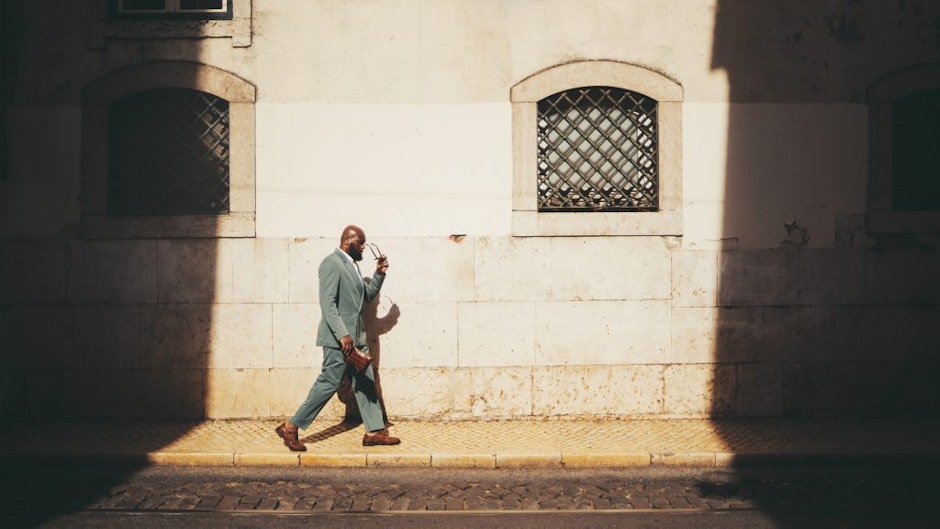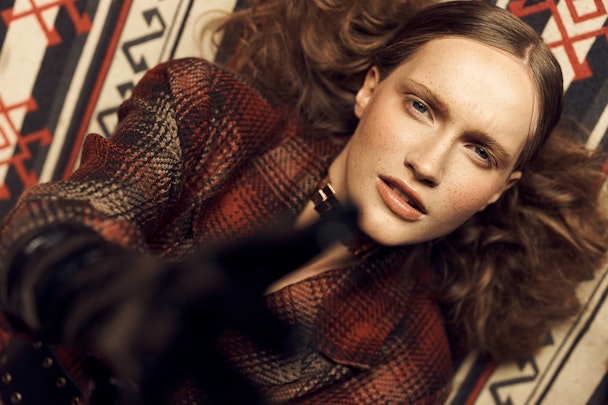How to apply the old money aesthetic to your marketing campaign
Discover the details of the current 'old money' trend, and learn marketing advice on leveraging the concept in your 2024 campaigns.

Quality that is proven by time. Conscious consumption. Preserving local and family history. In 2024, the old money aesthetic won’t just be a niche online trend, but a cultural phenomenon that unites continents and competitors.
Mentioned among seven creative trends for this year, the concept of old money has already gained billions of admirers on TikTok, Instagram, and Pinterest. Its visual language and values have become an efficient tool for brands to connect with 20- to 40-year-old users. Below, the Depositphotos team will guide you through the trend and provide marketing advice on leveraging the concept in your 2024 campaigns.
A short history of the old money aesthetic
In previous decades, the term “old money” was used to describe the generationally wealthy community. The modern online interpretation of the term is more inclusive: Vintage is seen as a budget- and nature-friendly alternative to impulsive shopping and fast fashion.
The essence of the “modern” old money aesthetic includes fashion classics of the 19th and the beginning of 20th century, where carefully designed items are paired with royal colors like burgundy, pine green, or indigo. Huge diamonds and luxurious brand logos are not characteristic of old money outfits, which are often modest yet elegant. See images featuring the aesthetic in a collection composed by Depositphotos.

In 2023, Millennials and Gen Z re-explored stealth wealth fashion and set a new trend in motion on TikTok and then on Instagram. At the end of the last year, the trend became a symbol of thoughtful consumption, with thousands of followers upgrading their wardrobes with items from flea markets.
Crafted treasures from past decades and vintage brands (Hermès, Gucci, and Dior are among the most valuable brands on the vintage market) became a way for people to feel connected with older generations and fashion history.
Key features of #oldmoney and #quietluxury
Although most online aesthetics appear and decline fast, quiet luxury is still booming on social media, in fashion, and fine art photography. However, it’s also evolving. In 2023, the aesthetic was about bringing back high-quality items of the past for sustainable fashion. This year, it shifted to cherishing family heritage and traditions. TikTok, Instagram, and Pinterest are the best sources to track this transformation. Key features of the old money style include:
Timeless approach
Old money items are those created with high attention to quality and detail—all to make pieces and products that last. This concept not only applies to materials like natural silk or mahogany wood, but also to colors and forms. The golden standard of the old money aesthetic is art nouveau and neoclassicism.
Stealth wealth
Forget the dazzling sparkle of diamonds, thick gold-plated chains, and logos emblazoned on clothes. The old money style is about quiet elegance and building a community around the idea of “if you know you know”. In this case, the principle applies to recognition of branded and vintage items by style and quality.
Rich muted tones
Color palette is of great importance for the old money aesthetic. Rich, royal hues such as crimson, violet, dark green, or dark blue are widely used. Pastel shades of the same colors are also suitable, especially peach (recently named the Color of the Year 2024 by Pantone), as well as sky blue and light purple.

Dos and don’ts of the aesthetic for marketing
1. Make it inclusive, not elite
The modern old money aesthetic is about family and local heritage, the feeling of belonging, and contributing to your community through preserving vintage items and creating products with respect for traditions. That’s why it’s better to not opt for messages that refer to elitism or divide society according to wealth.
Emphasize the cultural value of products, and make your audience believe that by purchasing them, they become honored local culture ambassadors. This is also a good way to build a customer retention cycle.
More on this topic: Decreasing customer retention rate? Check out these 5 strategies to fix it.
2. Commitment to sustainability, not thoughtless consumption
The quiet luxury aesthetic is based on timeless items of the highest quality with a story behind them. They are positioned as an alternative to fast fashion and non-conscious consumption. From a marketer’s perspective, one can sell a product more efficiently by explaining that it can be enjoyed for decades.
3. Check if your brand positioning aligns
Banding consistency helps you stay recognizable to customers and spend less money on marketing campaigns. It’s great if the old money aesthetic is something that goes in line with your current communication style and brand stance. If not, a sudden shift to royalcore after years of positioning as a liberal brand may confuse audiences. Instead, consider how you can thoughtfully incorporate this trend, and do so gradually.

4. Connect with Millennials and Gen Z, not Baby Boomers or Gen X
Not all generations equally understand and support old money values. For Baby Boomers, using items from the past, some of which are vintage, is their style of living; they are not sensitive to whether these items are luxurious or not, and appreciate them for practical reasons.
In turn, GenX (born between 1965 and 1980) is more concerned about safety, comfort, and care for their family members than the exclusivity of their interiors and outfits or their social impact.
Younger generations who express themselves and learn about new products from TikTok, Instagram, and YouTube are those with whom you can connect through the old money aesthetic.
5. Highlight the utility of products, not their “richness”
Whether future generations will use a product depends on how functional this item is and whether the product design will withstand the test of time. Work on fulfilling customer needs that are always relevant and try to offer products that have more than one purpose.

Wrapping up
What appeared as another online aesthetic a year ago is becoming a cultural trend with ambassadors among brands and customers under 40. In particular, Millennials and Gen Z strive to contribute to global sustainability without compromising on aesthetic. They study their roots to pass re-explored heritage on—that’s why the old money visual language works well for them.
Consider that campaigns leveraging the quiet luxury aesthetic should be thoughtful and consistent, since the concept is not just about visuals, but a certain worldview. In order to succeed, start experimenting on social media with the highest number of old money followers, like TikTok and Instagram, and create marketing campaigns focused on product quality and cultural value.
